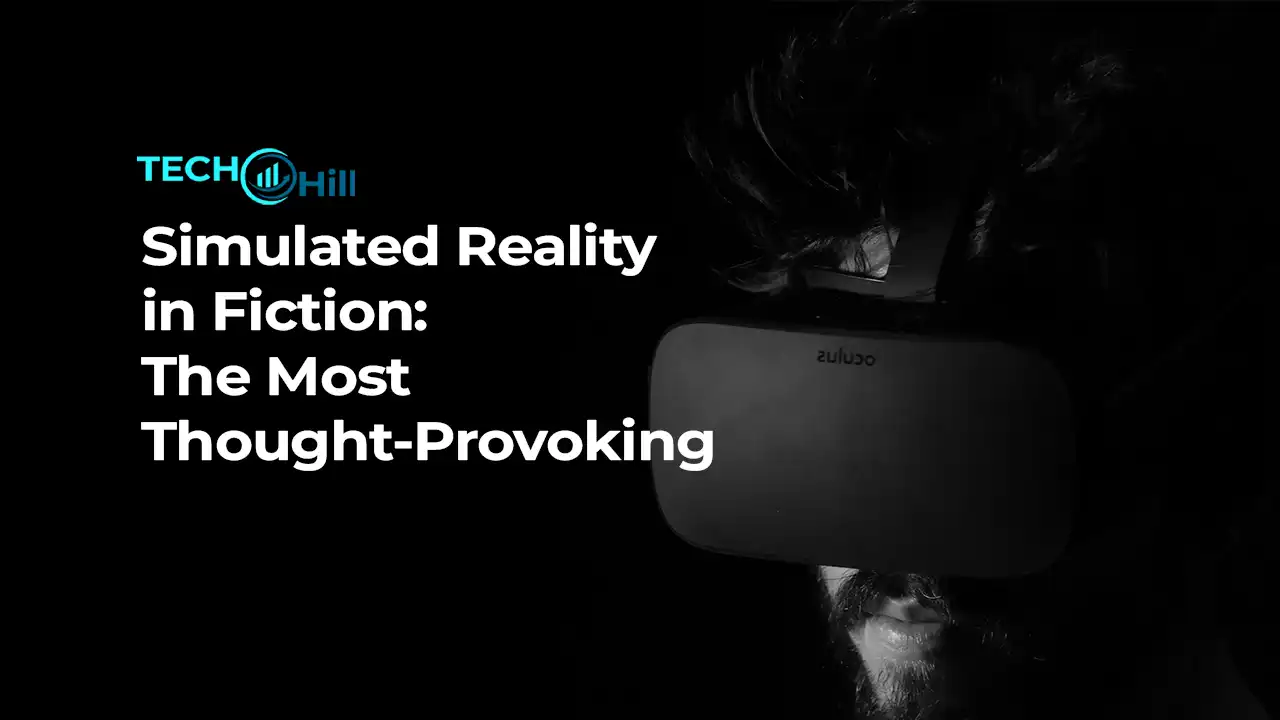Simulated Reality in Fiction: The Most Thought-Provoking

In the ever-evolving world of social media, Instagram has consistently remained a frontrunner, continually adapting and introducing new features to enhance user engagement and meet the dynamic needs of its global audience.
One of the latest buzzes in the digital grapevine is the possibility of Instagram introducing a profile views feature, a tool that could transform how users interact with their followers and content visibility. This article delves into the anticipated feature, exploring its potential impact, origins in the digital landscape, and what it could mean for the future of social networking.
Origins and Evolution of Simulated Reality in Fiction
Though our focus veers towards the potential of Instagram introducing a profile views feature, it’s intriguing to parallel this with the concept of simulated reality in fiction—a theme richly explored. The idea of simulated reality, where the lines between the real and the virtual blur, has captivated storytellers and audiences alike, providing a fertile ground for exploring the complexities of perception and technology’s role in shaping our understanding of the world.
The genesis of simulated reality in fiction can be traced back to philosophical and literary works that predate even the modern computer. Classics such as “Plato’s Allegory of the Cave” or “Zhuangzi’s Butterfly Dream” ponder the dilemma of distinguishing reality from illusion. However, it was not until the 20th century that technology caught up with imagination, allowing authors like Philip K. Dick and filmmakers like the Wachowskis to explore these themes with a new intensity, armed with the backdrop of burgeoning technological advancements.

Throughout the decades, as digital landscapes evolved, so did the narratives around simulated realities. Early works focused on dystopian outcomes of technology, while modern iterations often depict a nuanced coexistence of human and digital realms. This literary journey mirrors the technological progression from simple social media features to sophisticated tools like those Instagram may be poised to unveil, which promises to deepen the engagement by offering insights into viewer interactions—essentially a simulated reality of social standings and popularity.
Major Themes in Simulated Reality Fiction
Simulated reality fiction, while exploring the intricacies of virtual worlds, grapples with themes that resonate deeply with the human experience. These narratives often challenge our perceptions, question the nature of reality, and explore the ethical dimensions of technological control. As we relate these themes to the potential new feature on Instagram, it’s fascinating to see how age-old literary concerns find their echo in modern social technologies.
Identity and Authenticity: A central theme in simulated reality fiction is the exploration of identity. Characters often struggle with distinguishing their true selves from their virtual personas. This mirrors the social media experience, where users curate personas that may or may not align with their offline realities. Instagram’s possible profile views feature could further complicate these notions, prompting users to reflect on how they are perceived online versus their authentic selves.
Control and Surveillance: Many works in this genre address the idea of surveillance and the control exerted by unseen forces, whether they are malevolent AI or manipulative corporate entities. The ability to see who views your profile on Instagram introduces a subtle layer of surveillance, subtly shifting user behavior and interactions, reflecting the controlled environments depicted in simulated reality fiction.
Human-Machine Interaction: This theme explores the relationships between humans and technology, often highlighting dependency, enhancement, or even conflict. Instagram, by potentially allowing users to see profile views, blurs the lines between human curiosity and technological facilitation, fostering a more interconnected, if somewhat reliant, relationship with the platform.
Ethical Implications: Simulated reality fiction frequently raises questions about the ethics of creating or controlling digital worlds. Similarly, features like profile viewing could raise ethical considerations about privacy, consent, and the psychological impacts of such visibility on social media users.
Key Works and Authors
The genre of simulated reality fiction is rich with visionary authors and groundbreaking works that have shaped not just literature but also cultural perceptions of technology and reality. These key works and their creators offer profound insights into the ethical, philosophical, and technological dilemmas that resonate with contemporary digital innovations, like those we anticipate from Instagram.
Philip K. Dick: One of the most influential figures in this genre, Dick’s work often questioned the nature of reality and the impact of technology on human identity. His novel, “Do Androids Dream of Electric Sheep?” which was adapted into the film “Blade Runner,” explores these themes through a future where human-like androids challenge the essence of human identity.
William Gibson: Known as the father of cyberpunk, Gibson’s “Neuromancer” is a cornerstone of simulated reality fiction. The novel introduces a virtual landscape, the cyberspace, where data thieves and corporate moguls vie for control, highlighting the interplay between human minds and digital realities.
Neal Stephenson: Stephenson’s “Snow Crash” presents a hyper-commercialized future where human avatars interact in a digital space called the Metaverse. This work is particularly prophetic, envisioning a world that mirrors the current trajectory of social media and virtual reality platforms.
The Wachowskis: In film, the Wachowskis’ “The Matrix” series has been monumental in popularizing the concept of a simulated reality. It vividly depicts a dystopian future where humanity lives unaware within a fully simulated world, controlled by an AI. This series deeply influences public discourse around technology’s potential to manipulate reality.
Impact and Criticism
The incorporation of simulated reality themes into fiction has profoundly impacted both literature and society, providing a critical lens through which we view the increasing intersection between human life and technology. As we consider these impacts and criticisms, parallels can be drawn to how social media features, like the speculated Instagram profile views, might influence user behavior and societal norms.
Impact on Society and Culture: Simulated reality fiction has underscored critical dialogues about the potential and pitfalls of technological advances. Works like “The Matrix” and “Neuromancer” have inspired technologists and philosophers alike to consider the implications of virtual realities and AI. These narratives have seeded discussions about privacy, surveillance, and the ethical limits of technology—issues that are increasingly relevant as platforms like Instagram continue to evolve and shape our social interactions.
Criticism of Technology Dependency: A common critique within this genre is the dependency on technology to define reality and identity. Authors like Philip K. Dick have been particularly prescient in highlighting how these dependencies can erode individuality and autonomy. This criticism is mirrored in the concerns about social media platforms, where features such as profile views might exacerbate issues like social validation and online persona management, potentially leading to increased anxiety and a distorted sense of self-worth.
Philosophical and Ethical Questions: Simulated reality fiction often poses philosophical questions about the nature of reality and existence. These works challenge readers to consider what is genuinely real and what consequences might arise from blurring the lines between digital and physical lives. Similarly, new Instagram features bring up ethical questions regarding user consent, data privacy, and the psychological impact of constant social monitoring.
Literary Criticism: From a literary perspective, simulated reality fiction has been both lauded for its innovative use of narrative and critiqued for sometimes prioritizing concept over character development. This genre pushes the boundaries of traditional storytelling, much like social media platforms continually reshape narrative forms through multimedia and interactive content.
Future Trends in Simulated Reality Fiction
As we look towards the horizon of simulated reality fiction, several emerging trends suggest exciting and, at times, unsettling developments for this genre. These trends not only forecast the evolution of narrative forms but also reflect broader societal shifts towards more immersive and interactive technological experiences. These insights help us anticipate the kinds of features platforms like Instagram might explore in the future.

Increased Immersion and Interactivity: With the advent of virtual reality (VR) and augmented reality (AR) technologies becoming more accessible, simulated reality fiction is likely to delve deeper into immersive experiences. This could manifest in stories that are not only read or watched but experienced physically and sensorially through advanced VR setups. For social media, this suggests a move towards more immersive ways of interacting with content, potentially allowing users to “step into” the profiles they visit.
Integration of AI and Machine Learning: Fictional narratives are beginning to explore the implications of AI that can learn and adapt beyond their programming. This trend points to stories that more deeply investigate the ethical and existential dilemmas of living alongside intelligent machines. In the context of Instagram and similar platforms, this could mean more sophisticated algorithms that not only predict user preferences but adapt to emotional and psychological states, changing how content is delivered and consumed.
Ethical and Philosophical Deepening: As the public becomes more aware of and sensitive to the ethical issues raised by technology, simulated reality fiction is likely to engage more deeply with these themes. Future works may focus on the consequences of digital omnipresence, exploring scenarios where the digital and physical realms are almost indistinguishable. For Instagram, this might raise questions about digital identity, privacy rights, and the ethical use of data.
Cross-Genre Experimentation: Simulated reality fiction is set to blur the lines between science fiction, fantasy, mystery, and even non-fiction, creating hybrid forms that appeal to a broader audience. This reflects a general trend in media consumption where genres are less rigid, encouraging a more diverse narrative approach that could influence how stories are told on platforms like Instagram.
Global Perspectives: As technology connects the globe more tightly, future simulated reality fiction will likely incorporate more diverse cultural perspectives on technology and reality. This diversity can enrich the genre and broaden its appeal, influencing how global platforms like Instagram tailor content and features to a multicultural user base.
Conclusion
The exploration of simulated reality in fiction provides a profound commentary on our evolving relationship with technology. As we’ve navigated through the origins, major themes, key works, and anticipated future trends of this genre, it’s clear that these narratives are more than just speculative—they mirror and sometimes predict the complexities of our digital lives.
